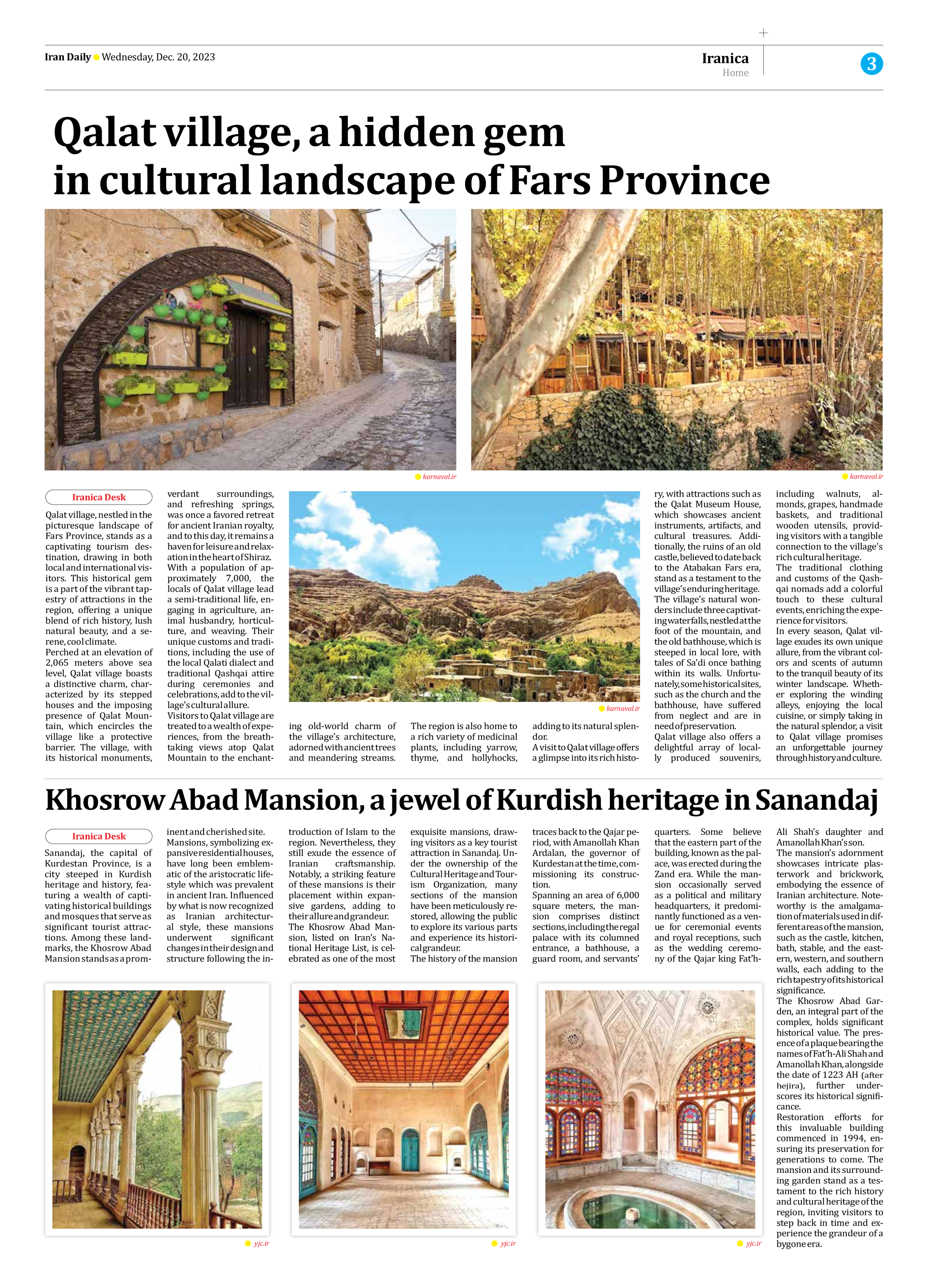
Khosrow Abad Mansion, a jewel of Kurdish heritage in Sanandaj
Sanandaj, the capital of Kurdestan Province, is a city steeped in Kurdish heritage and history, featuring a wealth of captivating historical buildings and mosques that serve as significant tourist attractions. Among these landmarks, the Khosrow Abad Mansion stands as a prominent and cherished site.
Mansions, symbolizing expansive residential houses, have long been emblematic of the aristocratic lifestyle which was prevalent in ancient Iran. Influenced by what is now recognized as Iranian architectural style, these mansions underwent significant changes in their design and structure following the introduction of Islam to the region. Nevertheless, they still exude the essence of Iranian craftsmanship. Notably, a striking feature of these mansions is their placement within expansive gardens, adding to their allure and grandeur.
The Khosrow Abad Mansion, listed on Iran’s National Heritage List, is celebrated as one of the most exquisite mansions, drawing visitors as a key tourist attraction in Sanandaj. Under the ownership of the Cultural Heritage and Tourism Organization, many sections of the mansion have been meticulously restored, allowing the public to explore its various parts and experience its historical grandeur.
The history of the mansion traces back to the Qajar period, with Amanollah Khan Ardalan, the governor of Kurdestan at the time, commissioning its construction.
Spanning an area of 6,000 square meters, the mansion comprises distinct sections, including the regal palace with its columned entrance, a bathhouse, a guard room, and servants’ quarters. Some believe that the eastern part of the building, known as the palace, was erected during the Zand era. While the mansion occasionally served as a political and military headquarters, it predominantly functioned as a venue for ceremonial events and royal receptions, such as the wedding ceremony of the Qajar king Fat’h-Ali Shah’s daughter and Amanollah Khan’s son.
The mansion’s adornment showcases intricate plasterwork and brickwork, embodying the essence of Iranian architecture. Noteworthy is the amalgamation of materials used in different areas of the mansion, such as the castle, kitchen, bath, stable, and the eastern, western, and southern walls, each adding to the rich tapestry of its historical significance.
The Khosrow Abad Garden, an integral part of the complex, holds significant historical value. The presence of a plaque bearing the names of Fat’h-Ali Shah and Amanollah Khan, alongside the date of 1223 AH (after hejira), further underscores its historical significance.
Restoration efforts for this invaluable building commenced in 1994, ensuring its preservation for generations to come. The mansion and its surrounding garden stand as a testament to the rich history and cultural heritage of the region, inviting visitors to step back in time and experience the grandeur of a bygone era.







